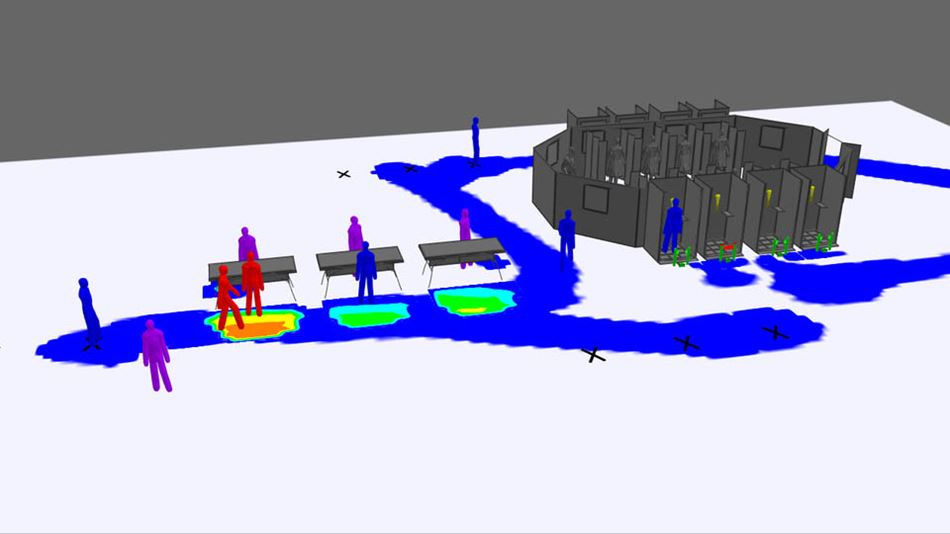 Jennifer DiMambro
Principal, Global and Americas Science, Industry & Technology Business Leader,New York
Jennifer DiMambro
Principal, Global and Americas Science, Industry & Technology Business Leader,New York
With a vaccine or treatments still in development, regular testing will be central to how businesses and institutions can reopen with confidence. In New York City, as in many American states, there is a pressing need to increase coronavirus testing capacity. We've been helping architectural practice SITU Studio to develop patient screening booths – urban “walk-thru” testing sites, suitable for a dense pedestrian environment like NYC.
With Coronavirus, risks often occur when people congregate too closely, and likely queues can quickly become part of the problem. The layout and configuration of testing booths are also important factors, and designs must provide proper distancing and keep patients safe. To solve this issue, we've been working to model pedestrian traffic flows at testing sites, to make sure the testing process can be efficient and safe. Our analysis has allowed the design team to refine the queuing approach and maximize social distancing while also considering patient comfort.
